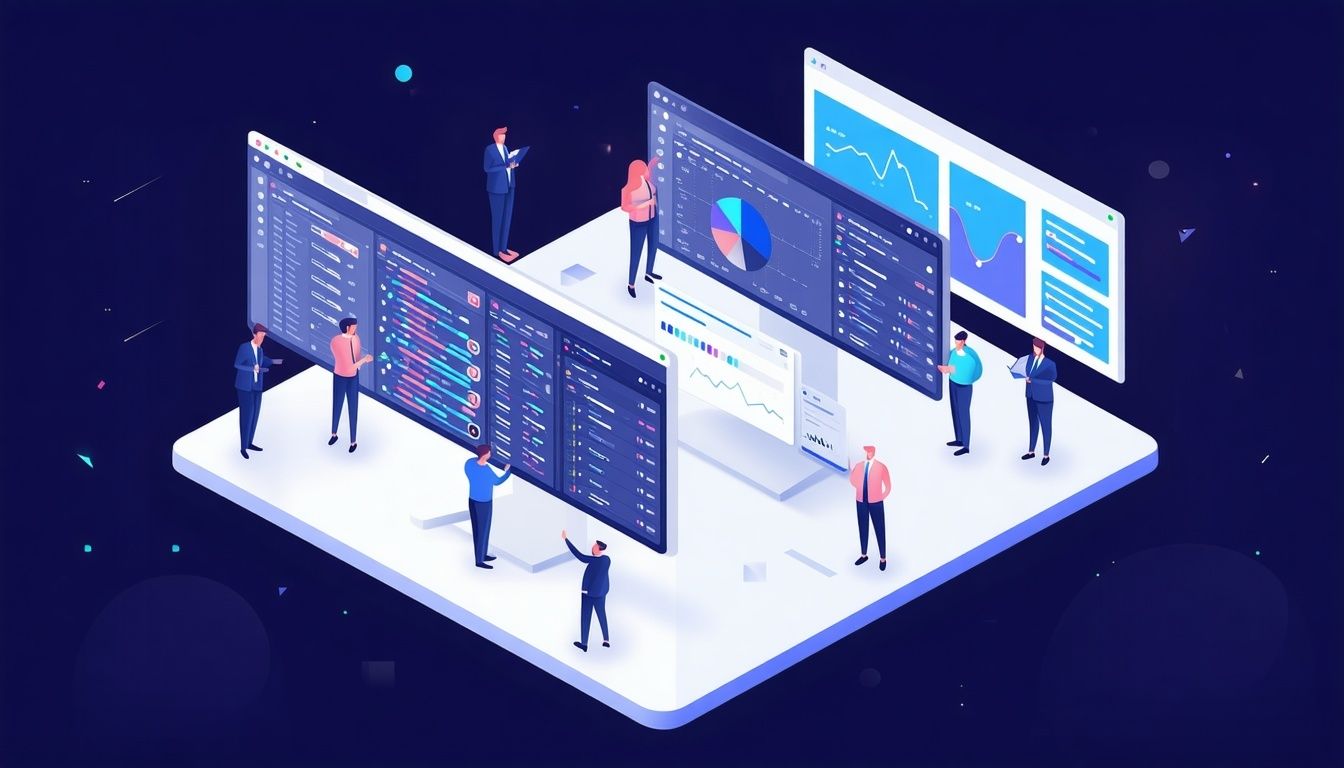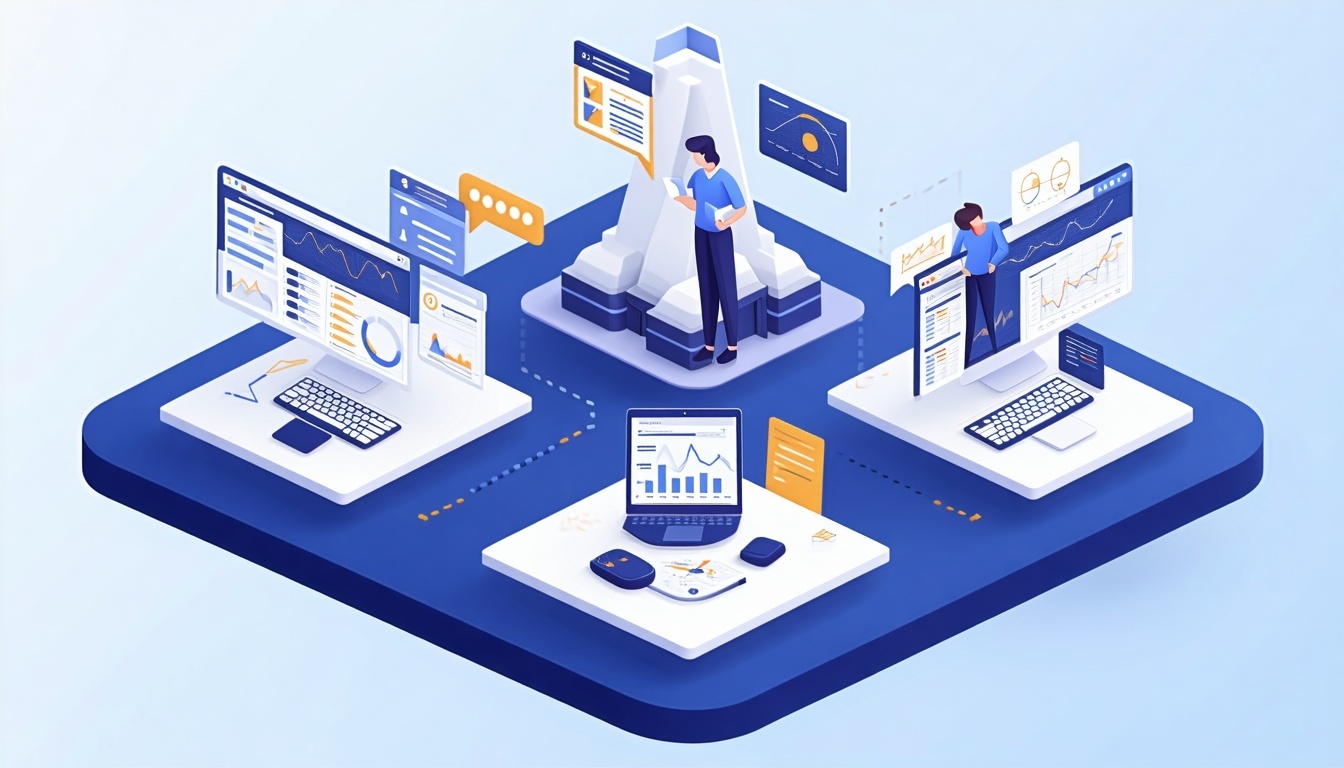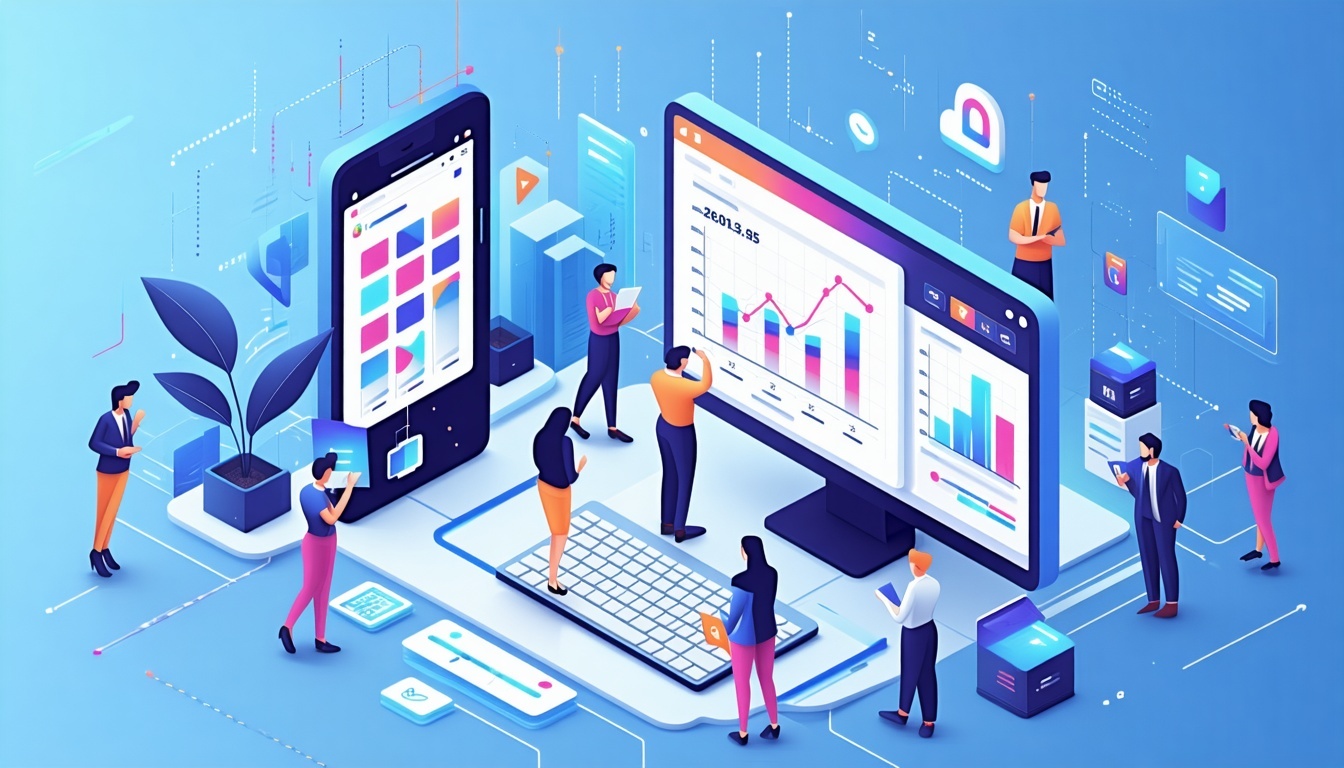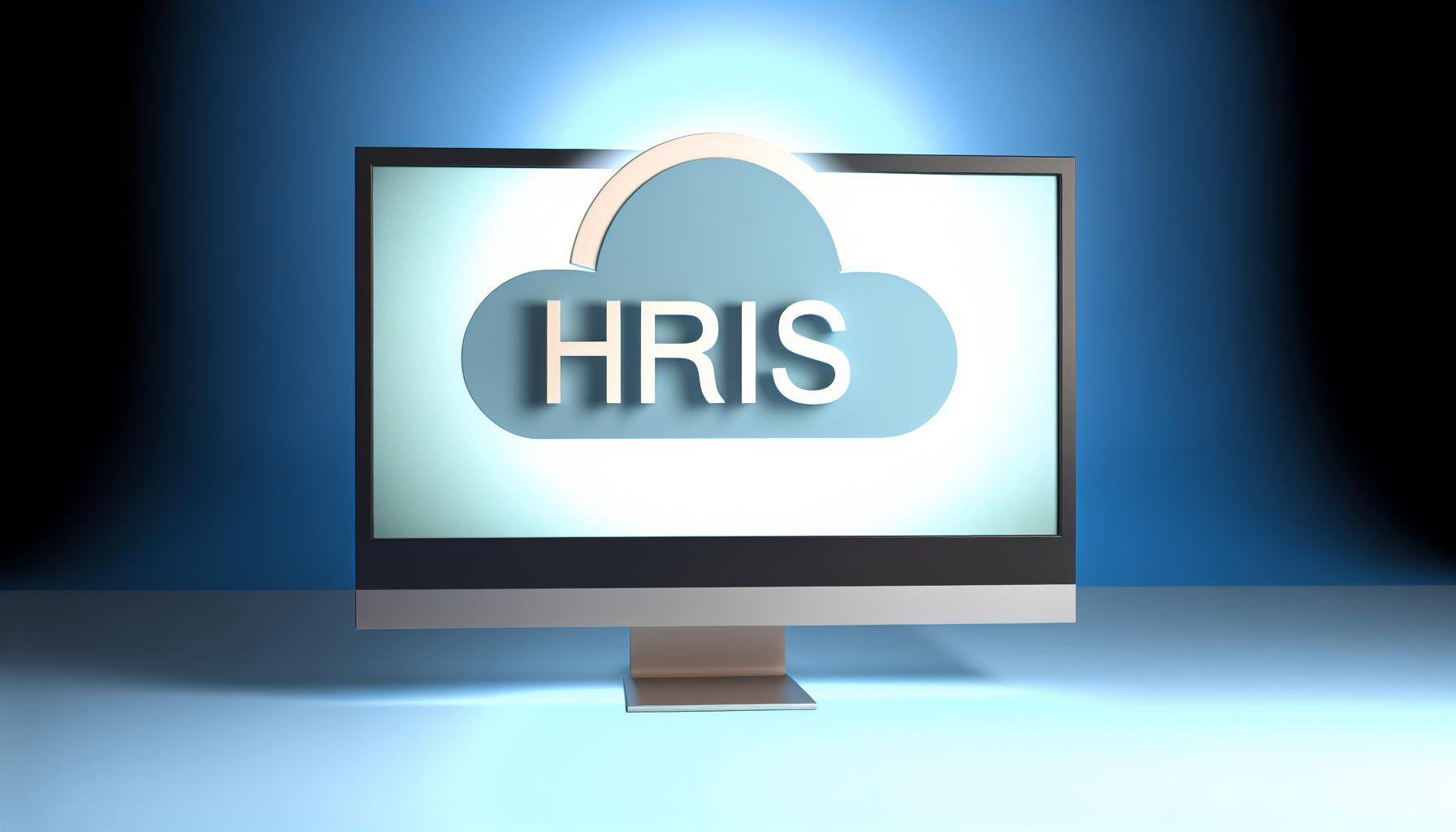The Ultimate Guide to Workforce Management (WFM) Software
July 11th, 2025
6 min read

Are you tired of the endless cycle of scheduling conflicts, inaccurate timesheets, and constant compliance worries? For many businesses, managing a workforce without the right tools feels like juggling too many balls, which often leads to escalating labor costs and even losing valuable employees due to avoidable operational friction.
At Lift HCM, we understand these challenges intimately. We've witnessed firsthand how chaotic and costly workforce management can become when a robust system isn't in place. That's why we've dedicated ourselves to helping hundreds of businesses like yours streamline their operations, significantly reduce labor costs, and dramatically boost employee satisfaction through intelligent workforce management software.
In this article, you'll discover exactly what workforce management (WFM) software is, how it functions, and most importantly, how it can revolutionize the way you handle everything from scheduling and time tracking to labor forecasting and regulatory compliance. Whether you're overseeing a dynamic retail team, managing a multi-location franchise, or navigating the complexities of a large manufacturing operation, this guide is your essential roadmap to achieving smarter, more efficient workforce operations.
Table of Contents
- What Is Workforce Management Software?
- Why Workforce Management Tools Matter More Than Ever
- Top Benefits of Workforce Management Software
- Common Workforce Challenges Solved by Software
- How Workforce Management Differs from Payroll or HRIS
- Key Features to Look For in Workforce Management Software
- Questions to Ask Before Choosing Workforce Management Software
- Bringing Clarity and Control to Workforce Operations
What Is Workforce Management Software?
Workforce Management (WFM) software is a sophisticated digital platform designed to help you efficiently manage how, when, and where your employees work. At its core, it integrates critical functions like employee scheduling, time and attendance tracking, paid time off (PTO) management, labor forecasting, and comprehensive compliance support.
Consider it your central command hub for all workforce-related activities. Instead of navigating multiple disparate platforms—or worse, manually tracking time cards and chasing down email approvals—WFM software consolidates everything into a single, intuitive system, ensuring organization, visibility, and control.
Why Workforce Management Tools Matter More Than Ever
Did you know that labor costs can account for up to 70% of a business's total expenses? This staggering figure means that even minor inefficiencies in time tracking or scheduling can profoundly and immediately impact your profitability.
According to research by Deloitte, companies that strategically implement workforce management solutions often report a 20% improvement in productivity and up to 15% in labor cost savings. To put this into perspective, even a modest 5% reduction in overtime alone can translate into tens of thousands of dollars in annual savings for a mid-sized company.
In today's economic climate, where every dollar counts, WFM software empowers you to maximize your team's potential without risking burnout or sacrificing employee well-being. Furthermore, with the growing prevalence of hybrid work models and the ongoing challenges of talent retention, efficient and adaptive workforce management has become an absolute necessity, not just a luxury.
Top Benefits of Workforce Management Software
Businesses that adopt WFM solutions consistently report a range of transformative advantages:
-
More Accurate Payroll: Automated time and attendance syncing eliminates manual errors, ensuring precise payroll calculations every time.
-
Significant Time Savings for Managers: Intuitive drag-and-drop scheduling tools drastically reduce the time spent creating and adjusting schedules.
-
Reduced Compliance Risk: Built-in labor law rules and alerts help you automatically adhere to complex regulations, minimizing the risk of costly fines and legal issues.
-
Improved Employee Satisfaction: Self-service portals empower employees to manage their schedules, request time off, and access information, fostering greater autonomy and engagement.
-
Real-time Labor Insights: Gain instant access to critical data for informed staffing decisions, optimized budgeting, and proactive operational adjustments.
-
Enhanced Productivity: By optimizing schedules and reducing administrative burdens, your team can focus more on core tasks and less on manual processes.
When implemented effectively, WFM software evolves beyond a mere administrative tool; it becomes a powerful enabler of growth and efficiency for your entire organization.
Common Workforce Challenges Solved by Software
Manual workforce management methods are inherently prone to errors and inefficiencies. WFM software, however, provides robust solutions to these persistent challenges:
| Challenge | Manual Process | WFM Software Solution |
| Missed punches | Paper timecards | Biometric or mobile clocks with reminders |
| Shift conflicts | Manual spreadsheets | Real-time, rule-based auto-scheduling |
| PTO tracking | Email + HR notes | Centralized, self-service leave management |
| Compliance audits | Paper trails | Digital audit logs and alerts |
| Labor forecasting | Gut instinct | Historical data + forecasting models |
WFM software doesn't just close the door on manual errors; it locks it, providing a secure and efficient framework for your workforce operations.
How Workforce Management Differs from Payroll or HRIS
While interconnected, WFM, Payroll, and HRIS platforms serve distinct operational functions within your organization. Understanding these core differences enables strategic technology investments that optimize workforce operations, financial accuracy, and employee experience. The most successful implementations leverage each system's unique strengths while ensuring seamless data integration across all platforms.
Think of it this way: Your payroll software is your financial calculator, your HRIS is your comprehensive employee filing cabinet, and your WFM software is your dynamic operations dashboard, ensuring your most valuable asset—your people—are deployed optimally.
Key Features to Look For in Workforce Management Software
Not all WFM tools offer the same level of functionality or configurability. When evaluating solutions, prioritize those with these essential features:
-
Real-time Time and Attendance Tracking: Instant visibility into who's clocked in, clocked out, and on break.
-
Rule-Based Scheduling: Automated scheduling that adheres to complex labor laws (e.g., FLSA, state-specific rules), union agreements, and internal company policies.
-
Comprehensive PTO, Holiday, and Sick Leave Management: Streamlined processes for requesting, approving, and tracking all types of employee leave.
-
Geofencing or Biometric Clock-ins: Advanced options to ensure employees are clocking in from approved locations or using secure identification methods.
-
Manager Alerts and Employee Mobile Access: Notifications for critical events (e.g., overtime approaching, missed punches) and empowering employees with self-service mobile capabilities.
-
Robust Audit Trail and Compliance Reporting: Detailed records of all time and attendance data, easily accessible for audits and regulatory reporting.
-
Seamless Integration with Payroll (like Lift HCM!): Crucial for eliminating manual data entry, reducing errors, and ensuring a smooth flow from time tracking to payment.
-
Configurability and Scalability: The ability to customize the software to your unique business rules and grow with your organization's evolving needs.
Questions to Ask Before Choosing Workforce Management Software
Choosing the right workforce management (WFM) software can have a big impact on how you manage your team, time, and resources. Below are the key questions business owners often ask—and should ask—before making a decision.
What is workforce management software, and how does it help my business? Workforce management software helps streamline scheduling, time tracking, labor forecasting, and compliance. It reduces manual processes and helps managers make smarter staffing decisions with real-time data.
What specific problems will this software solve for my business? Depending on your challenges, WFM software can:
-
Reduce payroll and scheduling errors
-
Prevent time theft or buddy punching
-
Improve shift coverage and staffing efficiency
-
Track overtime and avoid compliance risks
-
Manage remote or multi-location teams more effectively
Is it scalable as my business grows? Yes, scalability is essential. Look for software that:
-
Supports growth without requiring major system overhauls
-
Lets you add new users, departments, or locations easily
-
Integrates with additional tools as your tech needs evolve
Can it integrate with my payroll and HR systems? It should. Seamless integration ensures time data flows directly into payroll and HR systems—reducing double entry and improving accuracy. Consider a unified platform like Lift HCM to streamline everything in one place.
How easy is it for my managers and employees to use? Ease of use matters for adoption. Look for:
-
A simple dashboard for managers to schedule and approve time
-
A mobile app for employees to clock in, request PTO, or swap shifts
-
An intuitive interface that reduces training time
How does the software handle compliance with labor laws? Good WFM software helps you stay compliant by:
-
Tracking rest and meal breaks
-
Alerting managers to potential overtime
-
Enforcing local and state labor rules
-
Providing audit-ready records
Can I customize scheduling rules and workflows? Yes. Your WFM tool should allow you to:
-
Set custom rules for availability, shift preferences, or job roles
-
Automate recurring scheduling patterns
-
Block specific days or create minimum rest windows between shifts
What kind of reporting or analytics does it offer? Data is key to decision-making. Ask if it provides:
-
Labor cost breakdowns by department or job
-
Forecasting tools tied to sales or seasonality
-
Real-time dashboards and trend tracking
-
Exportable custom reports for HR or finance
What’s the onboarding and support process like? Implementation should include:
-
Step-by-step onboarding assistance
-
Data migration from your old system
-
Admin and employee training
-
Ongoing support with a dedicated point of contact (like Lift HCM provides)
How secure is the platform? Security is non-negotiable. The software should:
-
Be compliant with data privacy standards like SOC 2 or GDPR
-
Offer secure login tools such as multi-factor authentication (MFA)
-
Provide uptime guarantees and backup procedures
Bringing Clarity and Control to Workforce Operations
Workforce management software is no longer a luxury—it is an operational imperative for organizations aiming to achieve sustainable growth, operational agility, and regulatory confidence. The stakes of inefficient scheduling, fragmented timekeeping, and compliance missteps are simply too high in today’s commercial environment. By investing in robust, industry-tailored WFM solutions, businesses can unlock measurable improvements in accuracy, transparency, and employee engagement, all while keeping costs in check.
At Lift HCM, we are committed to partnering with you every step of the way—delivering not only leading-edge technology, but also the strategic guidance and dedicated support necessary for long-term success. With our proven methodology, transparent engagement model, and deep expertise in navigating complex workforce challenges, we empower your team to operate at full potential.
Transform how you manage your workforce—streamline essential tasks, mitigate risk, and create an environment where both your business and your people can thrive. The path to clarity and control is clear. Ready to experience how Lift HCM can simplify your scheduling, optimize time tracking, and ensure complete compliance?
Schedule a Free Demo with Lift HCM Today!
Caitlin Kapolas is a results-driven professional with a strong background in account management and retail. She is dedicated to improving client experiences and building lasting relationships. Caitlin excels in identifying client needs, resolving issues, and implementing customized solutions that drive value. Her effective communication skills ensure high client satisfaction and loyalty, making her a trusted advisor and partner in meeting client needs with precision and professionalism.











.jpg?width=3000&height=2000&name=image%20of%20people%20pushing%20clock(1).jpg)

.jpg?width=1344&height=768&name=a%20software%20interface%20showcasing%20payroll%20management%20tools(1).jpg)
.jpeg?width=1024&height=1024&name=An%20image%20of%20a%20cloudbased%20payroll%20system%20with%20realtime%20accessibility%2c%20enhanced%20security%2c%20seamless%20integrations%2c%20scalability%2c%20and%20costeffectiveness%20bene-2(1).jpeg)

.png?width=2000&height=1376&name=payroll%20software%20image(1).png)




-1.jpg?width=1000&height=550&name=Businessman%20hand%20typing%20with%20cloud%20technology%20system%20and%20office%20symbol%20concept%20(1)-1.jpg)


